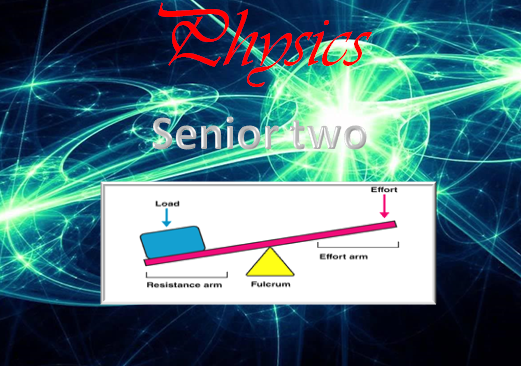20
This course is Secondary school physics studied in Senior Two. It is required that one should first complete the senior …
 This course is Secondary school physics studied in Senior Two.
It is required that one should first complete the senior one course before taking this course.
This course has topics like Nature of matter, diffusion, atmospheric pressure among others.
Please take course to get value-added information and news.
This course is Secondary school physics studied in Senior Two.
It is required that one should first complete the senior one course before taking this course.
This course has topics like Nature of matter, diffusion, atmospheric pressure among others.
Please take course to get value-added information and news.
DOWNLOAD COURSE HERE
Course Currilcum
-
- WORK ENERGY AND POWER Details 00:00:00
- TURNING EFFECT OF FORCES, CENTRE OF GRAVITY AND STABILITY Details 00:00:00
- PHY2: MECHANICAL PROPERTIES OF MATERIALS Details 12:00:00
- PARTICULATE NATURE OF MATTER Details FREE Unlimited
- This Unit is about matter and everything that goes with it.
MECHANICAL PROPERTIES OF MATERIALS assignment 10, 00:00 PARTICULATE NATURE OF MATTER assignment 10, 00:00 -
- PRESSURE IN SOLIDS AND FLUIDS Details 00:00:00
- PHY2: ATMOSPHERIC PRESSURE Details 5 days
- MECHANICAL PROPERTIES AND HOOKE’S LAW Details 00:00:00
- PHY2: DIFFUSION Details FREE 02:00:00
- This unit is about Diffusion in liquids and gas among other things.
- PHY2: COHESION AND ADHESION Details 03:20:00
- This unit is about Adhesion and Crystallisation as you see above.
- PHY2: REFLECTION ON PLANE MIRRORS Details 1 year
- By the end of this chapter, you should be able to: 1. Define: (a) A ray and a beam. (b) State and draw the types of beams. 2. (a) State (i) The rectilinear propagation of light. (ii) The types of shadow. (b) Describe an experiment for the formation of the types of shadows. (c) State: The types of eclipses. (d) Describe with a help of diagrams the formation of the types of eclipses. 3. (a) Describe (i) The structure of the Pin-hole camera. (ii) The formation of image in a pin-hole camera. (b) State: (i) The properties of the image formed in a pin-hole camera. (ii) The effects of the object distance and the size of the pin hole, on the image formed in a pin-hole camera. 4. (a) Define magnification. (b) Solve problems using the formula of magnification.
- MAGNETISM AND MAGNETIC FIELDS Details 00:00:00
- REFLECTION OF LIGHT Details 00:00:00
- ELECTROSTATICS Details 00:00:00
- PHY2: MOTION Details 20:00:00


